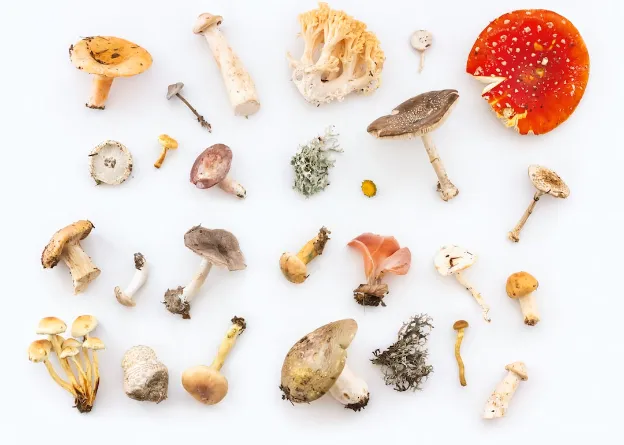Which mushrooms are edible?
People, who pick mushrooms in the forest, are usually faced with the question, "What kind of mushroom is this?" If you are not an expert in identifying mushroom species, you'd better not pick mushrooms in the forest because not all of them are edible!
Fungi are the second-largest kingdom of organisms on earth after animals (fauna), as fungi outnumber the diversity of plants (flora) by 6–10 times. Worldwide, there are about six to ten times more mushroom species than plant species.
But opinions are divided on the exact number. Some scientists believe there are over 6 million species of fungi in the world. According to a new study by the Free University of Berlin, the estimated global fungal diversity is somewhere between 2.2 and 3.8 million species of fungi. According to this publication of the Berlin Botanical Museum, the number of fungi species in the world is at least 18 times higher than previously thought! So far, about 14,000 species have been scientifically classified.
Of course, these are not all edible mushrooms; some are molds, intestinal parasites, and others. The number of edible mushrooms is naturally smaller.
Which mushrooms are edible?
Although the domestic mushroom species are comparatively well-researched, only a small portion of the mushrooms found in forests are edible! Importantly, by picking mushrooms in the forest, you should only put the mushrooms, which you can safely determine as edible, in the basket and later in the pot!
The list of edible mushrooms is composed of various species of mushrooms of the genus Tuber, leafy mushrooms, so-called non-leafy mushrooms, tooth fungi, and truffles.
Practical tip: During cooking, edible mushrooms quickly lose their aroma or bite. The suitable mushroom recipes, on the other hand, bring out the typical flavor of the respective mushroom variety. Grilled mushrooms are also a low-calorie delicacy!
What happens if you eat bad mushrooms?
If you suspect that you have eaten bad mushrooms, call the Poison Control Center at 1-800-222-1222. Eating a bad or spoiled mushroom is unlikely to cause serious illness, but may cause gastrointestinal illness and potentially fatal harm to the liver and kidneys. Symptoms usually occur 6-24 hours after consumption and can include nausea, stomach cramps, vomiting, and diarrhea. Store-bought mushroom poisoning is highly unlikely, but if you do accidentally eat poisonous mushrooms, taking activated charcoal may help slow symptoms. Eating spoiled mushrooms can cause illness or an upset stomach and have serious health consequences.
The danger of confusion: edible mushrooms and poisonous mushrooms
Time and again, poisonings occur due to the consumption of non-edible mushrooms - usually because the mushroom picker was untrained (or careless) in identifying the mushrooms. The following types of mushrooms are often confused with each other:- What mushroom can you confuse the porcini mushroom (Boletus edulis) with?
The good news is that the porcini mushroom can be very accurately identified! If anything, the porcini mushroom is confused with poisonous, bitter, light brown bilious mushrooms with pink undersides.
- With which mushroom can chanterelles be confused?
One of the reasons why the chanterelle is so popular is that it has no poisonous doppelgangers. There is a risk of confusion only with the false chanterelle, but the so-called orange-yellow forked-leaf mushroom is not poisonous, but difficult to digest, and it lacks the peppery taste, to which the chanterelle owes your name. Further, older specimens of Fool’s webcap (Cortinarius orellanus) resemble chanterelles, which should be paid attention to picking.
- With which mushroom can you confuse the Champignon Mushrooms?
Depending on the stage of growth, the highly poisonous death cap resembles the popular Champignon Mushrooms! In the edible mushroom, the lamellae are always light pink or grey, later brown, but never white! Also, the yellow-staining mushroom or simply the yellow-stainer (Agaricus xanthodermus) looks like an edible meadow mushroom (Agaricus campestris) - but if you scratch the stem of the freshly picked doppelganger, the spot immediately turns chrome-yellow and smells unpleasantly chemical (like carbide).
- With which mushroom can one confuse the Parasol (Macrolepiota procera)?
The Parasol mushroom (also called large giant umbrella mushroom) superficially resembles the freckled dapperling (Echinoderma asperum or Lepiota aspera). However, while the stem of the Parasol is "cackled" (attached, scaly scraps of epidermis left over from growth), the stem of the inedible freckled dapperling displays an irregularly patterned color gradient.





.jpg)





.png)


.jpg)